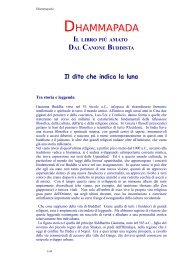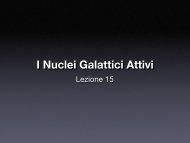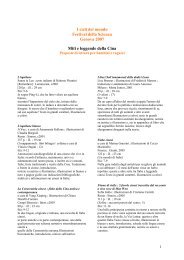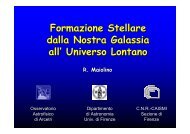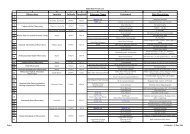Studio delle prestazioni di un sistema a fosfori per mammografia ...
Studio delle prestazioni di un sistema a fosfori per mammografia ...
Studio delle prestazioni di un sistema a fosfori per mammografia ...
You also want an ePaper? Increase the reach of your titles
YUMPU automatically turns print PDFs into web optimized ePapers that Google loves.
4.1 Ex<strong>per</strong>imental characteristic curve<br />
The response curve of the imaging system, in terms of PV as a f<strong>un</strong>ction of exposure dose, has<br />
been evaluated by exposing the IP at several dose levels with a fixed tube voltage of 28 kVp.<br />
The ex<strong>per</strong>imental setup is the same as the one described in Fig. 3.1 since we want to use the<br />
mAs vs. the air kerma calibration curve previously measured. The only <strong>di</strong>fference is that the<br />
ionization chamber was replaced by the IP cassette, while the 30 mm thick PMMA external<br />
filter, close to the beam exit window, remained the same. The cassette was placed just above<br />
the cassette holder, and therefore it was exposed without the anti-scatter grid in between.<br />
The IP has been exposed to the <strong>un</strong>iform X-ray beam for a set of dose values, the o<strong>per</strong>ator<br />
being careful to maintain the reproducibility of the process. After the exposure, the IP was<br />
imme<strong>di</strong>ately read, in order to minimize and to keep the temporal decay effect constant for every<br />
measure, and then cancelled. The acquired data were processed in the linear fix mode, allowed<br />
by the FUJI system software, in order to fully control every step of the image processing mode.<br />
The system was o<strong>per</strong>ating in High Resolution mode, with a pixel size of 50 �m. The sensitivity<br />
S was set to 200 and the latitude L to 4.0, correspon<strong>di</strong>ng to a linear processing curve over the<br />
entire dynamic range of the system. Each DICOM image was read by an IDL software code in<br />
order to access the raw data. The IP is exposed so that its shorter side is parallel to the <strong>di</strong>rection<br />
where the heel effect is bigger. In Fig. 4.1 a row parallel to the <strong>di</strong>rection where the heel effect is<br />
present is shown. In this case the IP was exposed to a <strong>un</strong>iform beam with a dose of about 676<br />
�Gy.<br />
In order to analyze a <strong>un</strong>iformly exposed region (ROI) of the image, and to be allowed<br />
to forget the heel effect, a strip 400 pixels wide (2 cm) and 2000 pixels height (10 cm) was<br />
selected. Furthermore the ROI was centered aro<strong>un</strong>d a point <strong>di</strong>stant 4 cm from the thorax side<br />
laterally centered. The ionization chamber was positioned in the same point during dose-mAs<br />
calibration measurements. The selected area is shown in black in the typical <strong>un</strong>iformly exposed<br />
image reported in Fig. 4.2.<br />
For each dose, the mean PV has been computed as the average value of the PVs of the ROI<br />
previously described. The correspon<strong>di</strong>ng standard deviation SD has been calculated on the ROI<br />
after a plane subtraction, in order to eliminate the first order contribution. If we consider the<br />
plane P that best fits the ROI <strong>un</strong>der investigation and we address each ROI pixel by the indexes<br />
47





